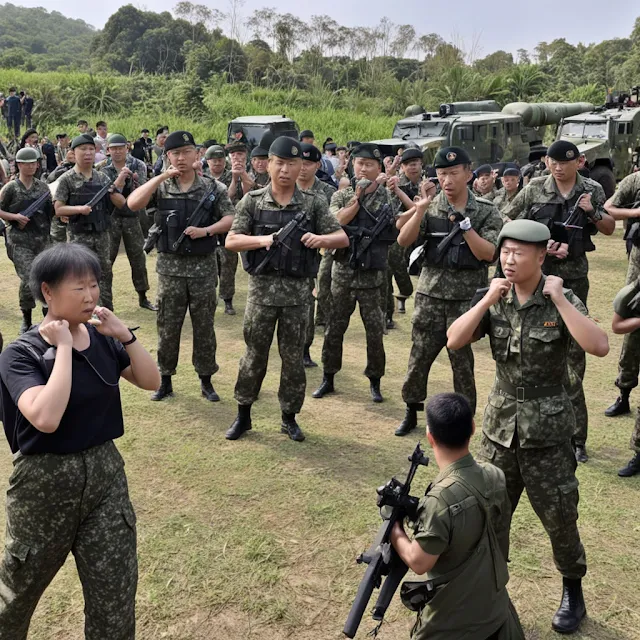INTRODUCTION
When presenting the topic of a "Voice of Freedom" controversy, it is important to provide readers with a clear understanding of what the controversy is about and why it is important. Here's how you can expand on this point:
The "Sound of Freedom" controversy refers to the ongoing debate over the noise generated by military aircraft during training exercises and operations. This noise, often described as loud and disruptive, has created tensions between military officials and communities living near military bases or flight paths.
The dispute arises from a clash between two fundamental priorities: national security and quality of life. On the one hand, military activities, including training exercises and readiness exercises, are important for ensuring national defense and preparedness. However, these activities can result in significant noise pollution, disrupting the peace and quiet of nearby residential areas.
As a result, residents affected by noise have raised concerns about its adverse effects on their health, well-being and overall quality of life. They argue that constant exposure to loud aircraft noise can cause sleep disturbances, stress and even hearing loss. Additionally, they may experience disruption in daily activities such as work, school, and leisure time.
On the contrary, military officials stress the need for these training exercises to maintain readiness and ensure the country's security. They argue that noise generated by military aircraft is an unavoidable aspect of military operations and efforts are made to reduce its impact whenever possible.
SIGNIFICANCE
- National security versus quality of life: The controversy revolves around the tension between national security interests, which require military training exercises and aircraft operations, and the quality of life concerns of residents living near military bases or flight paths. Concerns. The importance lies in the conflict between these two priorities and the impact on affected communities.
- Noise pollution and disturbance: The presence of military aircraft conducting training exercises can cause significant noise pollution, disrupting the peace of residential areas. The constant roar of jet engines, sonic booms and low altitude flights can adversely affect the physical and mental well-being of residents as well as their ability to carry out daily activities and sleep peacefully.
- Property values and economic impacts: Disputes can also impact property values and the local economy. Homes located near military bases or in areas with frequent aircraft noise may experience decreased property values, making it challenging for homeowners to sell their property or obtain fair market value. Additionally, businesses in affected communities, such as industries dependent on tourism, may suffer from decreased patronage or negative perceptions associated with noise pollution.
- Health and Welfare: Noise pollution from military aircraft can adversely affect the health and welfare of residents. Prolonged exposure to high levels of noise can cause stress, anxiety, sleep disturbances, hearing loss, and other health problems. Children, the elderly, and people with existing health problems may be especially sensitive to the effects of noise pollution.
- Residents: These are people who live in communities near military bases or areas where aircraft training exercises take place. Residents may experience disturbances such as loud noises from military aircraft, which may disrupt their daily lives and affect their quality of life. Their perspective often focuses on the negative impact of noise pollution on their well-being and the need for measures to reduce these impacts.
- Military officers: This refers to individuals within the military responsible for planning and conducting training exercises involving aircraft. Their approach often focuses on the necessity of these exercises to maintain readiness and national security. They may emphasize the importance of training to ensure that military personnel are adequately prepared for their roles and responsibilities.
- Policy Makers: Policy makers are government officials or representatives who are responsible for creating and implementing policies related to military operations, noise regulations, and community development. His approach involves balancing national security interests with the concerns of local communities. Policymakers must consider factors such as public safety, economic impacts, and environmental regulations when addressing the controversy.
- Local Businesses: Local businesses in communities near military bases may have different viewpoints on the dispute. Some businesses may benefit from increased economic activity associated with military operations, such as tourism or contracts with the military. Others may experience challenges due to noise disturbances or fluctuations in business activity. Their approach often revolves around the economic implications of the conflict and the need for solutions that support the local economy.
When exploring best practices and innovative solutions implemented in other communities facing similar challenges, we are essentially looking at what is working well elsewhere and how those strategies can be adapted or applied to the current situation. Imagine you're dealing with a noisy airport nearby, and you discover that another community facing a similar problem successfully implemented soundproofing measures for homes near the airport.
You'll want to know more about how they did it, what materials they used, how they included the community in the decision-making process, and what the results were. By studying these success stories, we can gain valuable insights and inspiration for possible solutions to our challenges. It's like learning from the experiences of others to find practical and effective ways to address your concerns.
CONCLUSION
Encouraging readers to engage in constructive dialogue and advocate for solutions that prioritize the needs of all stakeholders means urging them to participate in discussions about the "Sound of Freedom" controversy in a positive and supportive way. Instead of arguing or pointing fingers, it's about having respectful dialogue where everyone's opinion is heard and considered. By advocating solutions that prioritize the needs of all stakeholders, it is about finding ways to address the concerns of both residents affected by noise pollution and military officers conducting training exercises. It is essential to find solutions that balance national security interests with the well-being and quality of life of local communities. By encouraging this approach, we hope to foster understanding, collaboration and ultimately effective solutions that will benefit everyone involved.





Thank you commenting!
If you have any doubts let me Know..